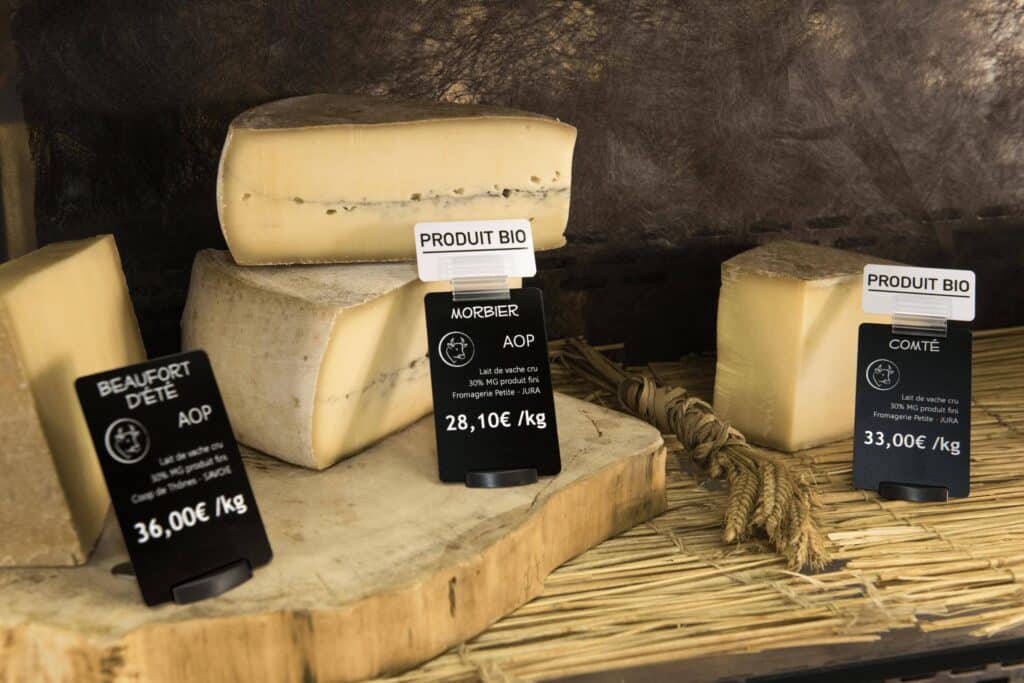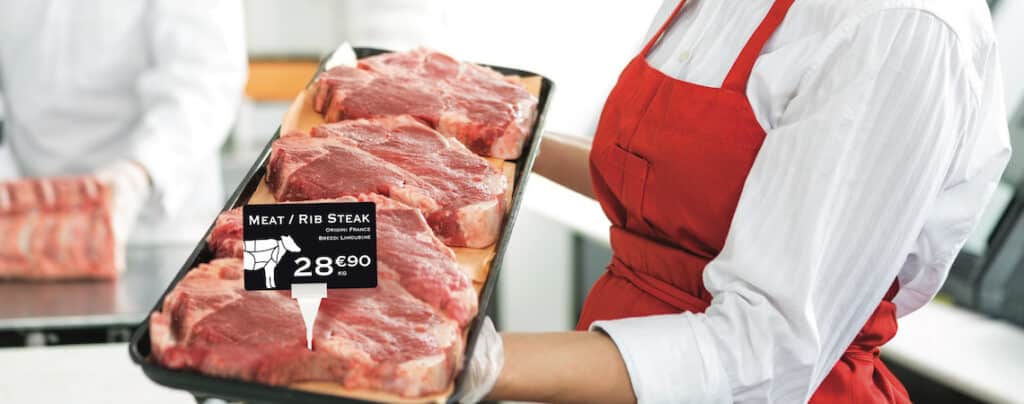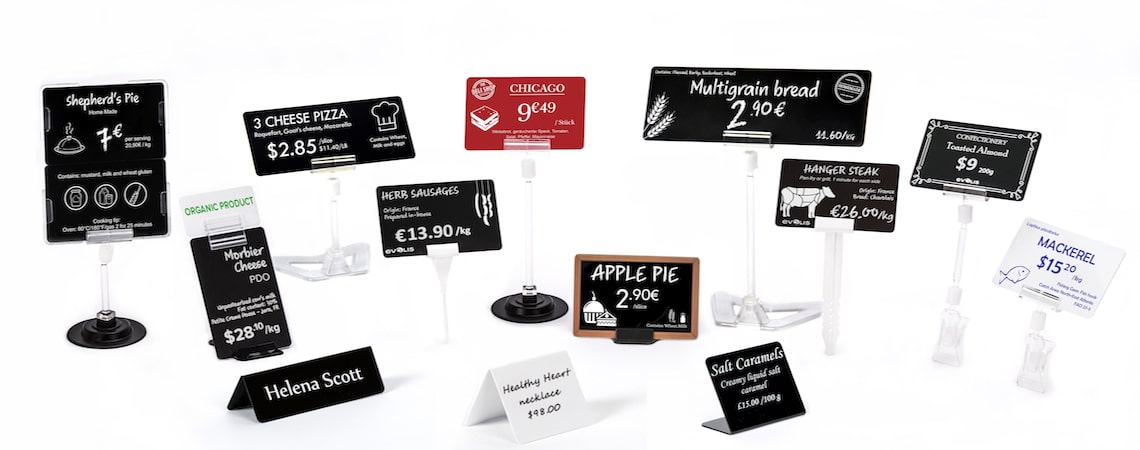Price cards are an essential communication tool for selling products. Some would even say that price cards are the determining factor in whether or not a customer buys your product. Whether you believe it or not, there's no doubt that a price card, along with other visual merchandising tools such as point-of-sale displays, have a major influence on customers' purchasing decisions.
With this in mind, will you know how to choose the best type and size of price card for your products to maximise their ability to attract buyers? If not, don't worry, we'll explain it all to you!
What are the different types of price card?
Simple price cards displaying product names and prices
There are many different types of price card, but many supermarkets stick to simple models that display only the name and price of products. This is a tried and tested method that works in all types of retail environments, and is particularly effective in attracting price-conscious shoppers.
For a successful operation, make sure people can see your prices at a glance by giving them pride of place on the card template, using a larger font size or placing the actual price higher up on the card; this will be the first thing people see.
Price cards with promotional messages
You'll often see price cards that carry promotional messages as well as essential product information. Many supermarkets use messages such as "homemade" or "best seller" to encourage passing shoppers to pay closer attention to certain products.
By doing so, you can increase the potential of your price cards to influence your customers' purchasing decisions, by harnessing the power of visual merchandising and POS to create a stronger bond with your customers.
Price cards using special layout models
You may not have noticed, but price cards come in hundreds of different designs. Did you also know that they have a considerable effect on the general atmosphere of your shop?
When browsing the so-called "trendy" or "too cute" boutiques, the influence of unique price card designs is unmistakable. Whether it's rustic wooden price cards used in shops that want to create a natural, organic environment, or bright, colourful displays for quirky fashion boutiques, price cards are a great way to assert your shop's brand and image.
You can easily adapt your price cards and point-of-sale displays to create the look and feel of your shop.It's the perfect complement to your products to grab shoppers' attention. And when in doubt, remember that the classic white-on-black price card design is a reliable choice for shops that want to convey an elegant, luxurious atmosphere.
What size should the price cards be?

Price cards the size of credit cards
Although the size of a price card can vary according to brand and product, one of the most commonly used sizes is close to that of a standard credit card. This format is approximately 85.6 mm by 54 mm.
It offers extensive possibilities for a basic layout, where key information can be balanced with advice on allergies and prices. With a smaller format, your layout risks becoming too cluttered if you try to fit everything in.
There are no strict rules on this. If you think you can show off your products better with a smaller price card, there's nothing to stop you. You can also make an impression with large-format price cards. Just make sure your choices match specific products and your shop's brand image.
Horizontal or vertical price cards
Include key product information, allergy markers and brand elements such as logos to attract your customers.
As well as playing with the size of your price cards to achieve different effects, you can also choose a horizontal or vertical orientation. You might choose this strategy if you think that standard credit-card sized price cards are too simple for the type of products you sell. Or maybe you simply want some variation to distinguish certain collections and ranges in your shop.
If you allow for sufficient width and height, you can easily Include key product information, allergy marks and brand elements such as logos to entice your customers with a vertical price card.
How to choose the best price card for your shop

Choose the presentation for your price card based on your brand and your target audience
The style of your price cards should be based on your brand image and what you know about your customers.
Like all good marketing material, the design of your price cards is based on your brand image and what you know about your customers. Always approach your visual materials from the point of view of your target audience; think about what will appeal to them and encourage them to buy your products.
There's no point having great price cards with bespoke artwork if they don't entice people to buy. Similarly, if your brand embodies sophistication and luxury, basic price card templates won't work. It's best to make a strategic decision about your price cards based on customer research data.
Make the most of a customisable price card printer
The best way to put our various tips and tricks for choosing the best price card designs for your shop into practice is to invest in your own customisable price card printer. The main reason is that it will give you greater control over the exact look and content of your price cards.
If you already have a clear idea of the type of price card that will best suit your shop and your customers, a printer of personalised price cards will help you to improve efficiency and qualityAnd you'll get results every time. Thanks to new technologies, it's easy to play around with all sorts of features such as layout, orientation, font size and graphic styles, to get price cards that suit every environment.
Ultimately, consumers are largely influenced by the visual merchandising, displays, signage and price cards in the shops they enter. An effective price card strategy allows you to maximise your sales potential, improve your competitiveness and strengthen your brand image.
